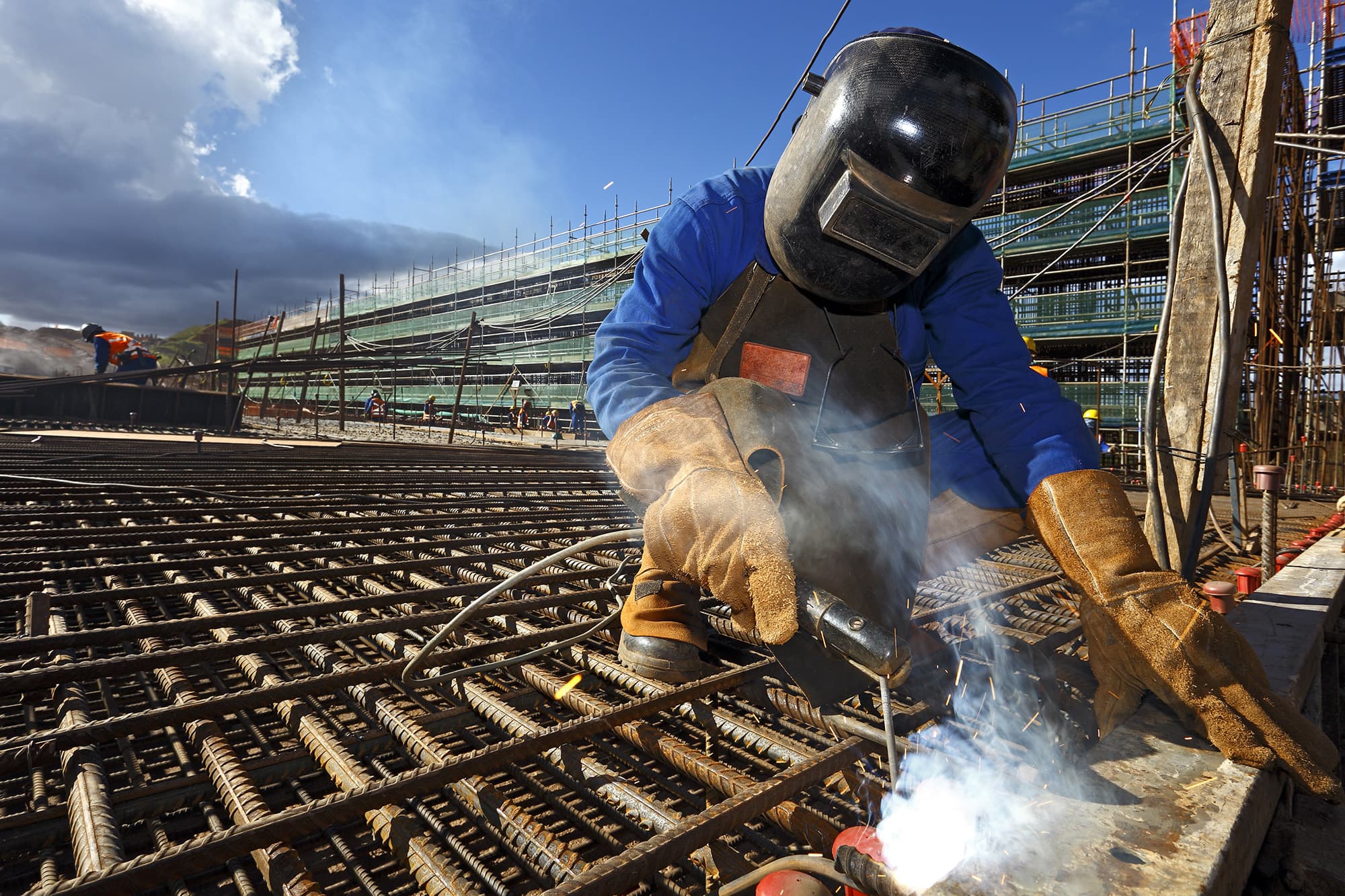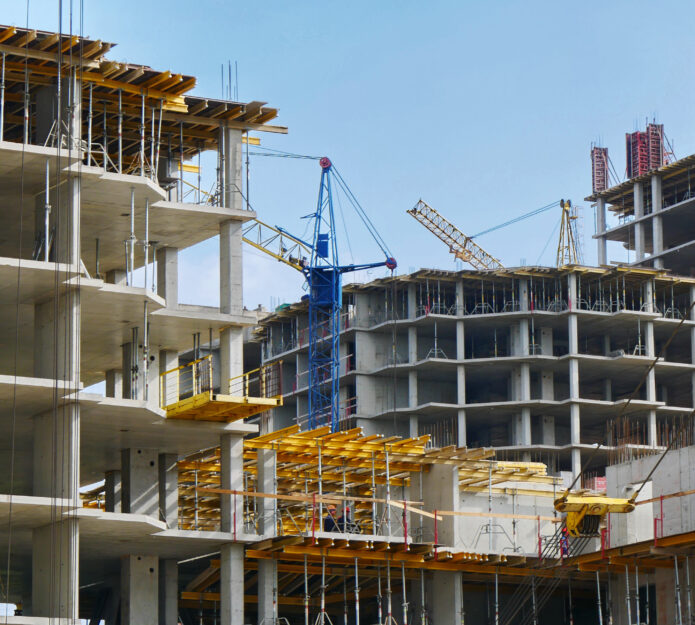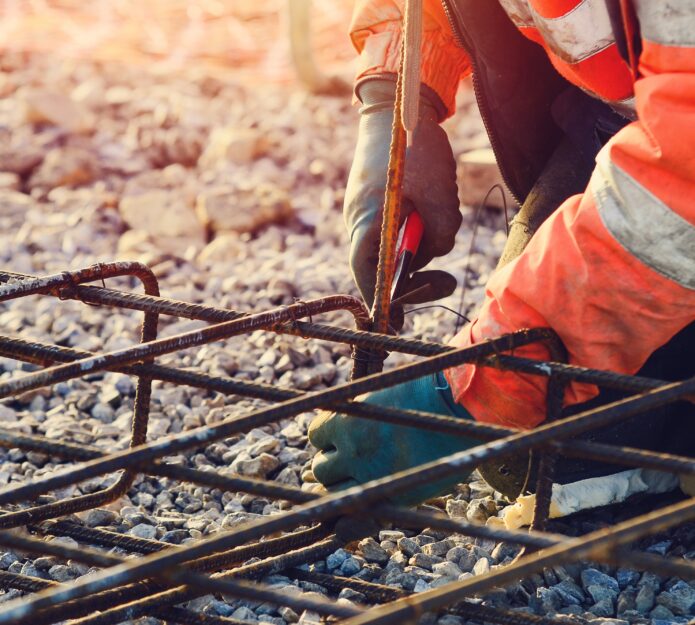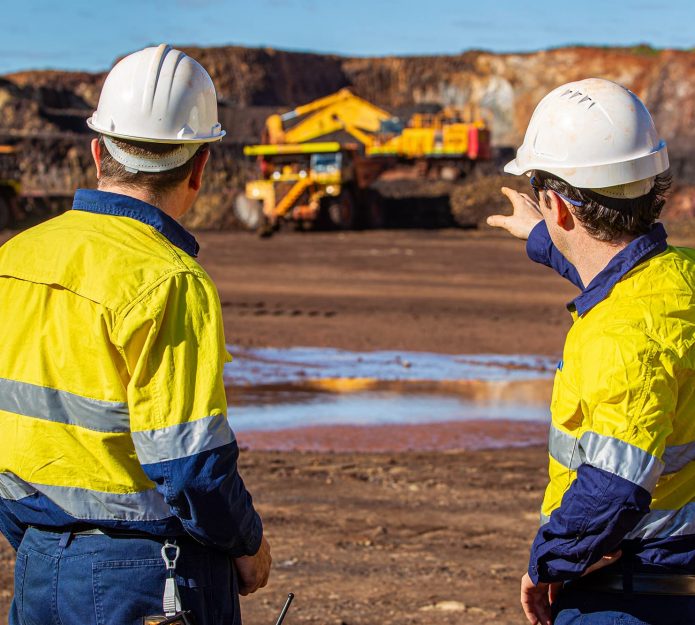Steel Fixing Labour Hire
If you need to top up your crew of steel fixers or require an entire workforce to tie the steel on your project, KMG can help.
Experienced Steel Fixers
We are an experienced provider of labour only steel fixing services. Our team can assist you with steel fixing on any job that requires reinforcement in WA. We offer fully trained and experienced fixers at hourly and tonnage rates.
We have been involved in some of West Australia’s most significant construction, civil, building, infrastructure and resources projects. Our work has assisted with reinforcement on bridges, buildings, and many other structures requiring steel fixing. KMG is dedicated to getting the job done quickly, within budget and without accidents.
To discuss your projects needs with a member of our team call 1300 636 149 . We can provide quotation on a rate per ton or an hourly basis.
Areas of Expertise
KMG can assist in all areas of steel fixing including but limited to:
Steel fixers typically work in construction sites where reinforced concrete structures are being built or repaired. Their expertise is crucial in ensuring the structural integrity and stability of buildings, bridges, tunnels, and other infrastructure projects. Here are some common places where steel fixers work:
- Construction Sites: Steel fixers are commonly employed on construction sites where concrete structures are being erected. This includes residential, commercial, industrial, and civil engineering projects such as high-rise buildings, bridges, dams, highways, and tunnels.
- Building Sites: Steel fixers work on building sites where concrete is used extensively, such as for the construction of foundations, walls, columns, beams, slabs, and other structural elements. They install reinforcing steel bars (rebars) according to engineering specifications to provide strength and stability to concrete structures.
- Infrastructure Projects: Steel fixers are involved in infrastructure projects that require reinforced concrete, including roads, bridges, highways, tunnels, railways, airports, and ports. They fabricate and install rebar cages, mats, and frames to reinforce concrete structures and ensure their durability and longevity.
- Heavy Engineering Projects: Steel fixers may be employed in heavy engineering projects that involve the construction or repair of large-scale industrial facilities, such as power plants, refineries, chemical plants, water treatment plants, and manufacturing facilities. They install rebar reinforcements to withstand heavy loads, seismic forces, and environmental conditions.
- Precast Concrete Plants: Some steel fixers work in precast concrete plants where prefabricated concrete components are manufactured off-site and transported to construction sites for assembly. They fabricate and assemble rebar cages, molds, and formwork to produce precast concrete elements such as beams, columns, panels, and slabs.
- Renovation and Retrofitting Projects: Steel fixers may be involved in renovation and retrofitting projects that involve strengthening or repairing existing concrete structures. They assess the condition of concrete elements, remove deteriorated or damaged reinforcement, and install new rebar reinforcements to enhance structural integrity and compliance with building codes.
- Mining and Resource Projects: In mining and resource projects, steel fixers may be employed to reinforce concrete structures associated with mining operations, such as processing plants, storage facilities, conveyor systems, and infrastructure for mineral extraction and transportation.

Our Steel fixing experience
Overall, steel fixers work in diverse settings within the construction and engineering sectors, where their expertise in reinforcing concrete structures is essential for the successful completion of projects ranging from buildings and bridges to infrastructure and industrial facilities.
All our steel fixers are reliable, experienced.
Traditional Steel Fixing
Hand Fixing: This traditional method involves manually cutting, bending, placing, and tying steel reinforcement bars according to construction drawings and specifications.
Wire Tying: Steel bars are tied together using wire to create a reinforcement framework, ensuring proper alignment and spacing. This method is commonly used in conjunction with hand fixing.
Prefabricated Steel Fixing
Prefabricated Reinforcement: Steel reinforcement cages, panels, or elements are fabricated off-site and delivered to the construction site, ready for installation. This method reduces on-site labor and assembly time.
Preassembled Mesh: Steel mesh panels are preassembled with reinforcement bars welded or tied together, providing a convenient solution for reinforcing large concrete areas such as slabs and walls.
Mechanical Steel Fixing
Rebar Tying Machines: Automatic rebar tying machines are used to quickly tie reinforcement bars together using pre-cut wire ties, improving efficiency and productivity on construction sites.
Rebar Bending Machines: Specialised rebar bending machines are employed to accurately bend reinforcement bars to the required shapes and dimensions, minimising manual labor and errors.
Integrated Reinforcement
Some formwork systems incorporate built-in reinforcement features, such as integrated rebars or precast concrete elements with embedded steel reinforcement. These systems streamline the steel fixing process and optimise structural performance.
Tailored Applications
Steel fixing techniques can be customised to meet specific project requirements, such as reinforcing curved or irregularly shaped concrete elements, accommodating complex architectural designs, or addressing challenging construction conditions.
Each type of steel fixing method offers unique advantages and may be selected based on factors such as project scope, timeline, budget, complexity, and desired level of automation. By utilising the appropriate steel fixing techniques, construction professionals can ensure the structural integrity, durability, and safety of concrete structures in various applications, ranging from residential and commercial buildings to infrastructure projects and industrial facilities.




